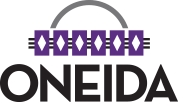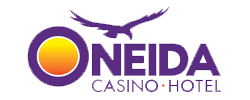History
History of Language Efforts in Oneida, Wisconsin
We encourage everyone to become involved in Oneida language,and remember that every word you learn and speak becomes part of keeping the Oneida language alive.
Oneida Language Revitalization Program – A short history
The Oneida Language Revitalization Program began during the Works Program Administration (WPA) era in the late 1930’s. During this time elders were hired to write journals that hold cultural, historical and linguistical value. Some of these journals were put into a book called, “Oneida Lives”. Others are located within Cultural Heritage.
Several major efforts were put into place after this time period. A significant movement toward saving the language began in the late 1960’s-1970’s during an era of change across the Great Turtle Island. Oneida was fortunate enough to have a collaborative working relationship with the University of Green Bay Wisconsin. A man by the name of Orville Clark realized how valuable the language is to Oneida and hired Bill Gollnick to lead efforts in starting a Language Program.
This language program worked with adult learners who were taught by fluent speaking elders living in the Oneida community. A requirement of this program included returning to school for a degree to teach. Many of the learners met this requirement and were subsequently hired at the Oneida Nation School System that comprised of Kindergarten through 8th grade sudents.The opening of the school was an exciting time for Educators. They were able to put what they learned during their time with the Language Program to use in the classroom. Many creative cultural and language activities were incorporated in their daily lesson plans. However, they were not allowed to remain language learners. Their lessons as learners proved to be valuable as professional educators in our school system. Educators of this time period inlcuded Shirley Barber, Dellora Cornelius, Nancy Osborne, Maxine Thomas, and Artley Skenandore to name a few.
During this time a young man by the name of Cliff Abbott took interest in the Oneida Language and worked hand in hand with Amos Christjohn to develop material and learn the vocabulary. Cliff continues to teach the Oneida Language as a professor with the University of Wisconsin-Green Bay. Jerry Hill is another student of Amos who continues to learn the Oneida Language on his own.
The next significant change took place in the spring of 1996 in response to a national crisis. Oneida went into a state of emergency. A survey of Elders administered by Cultural Heritage staff at the time indicated there were only 25-30 Elders left who learned to speak Oneida as their first language. As a Nation we know there is an urgent need to produce speakers to continue Oneida Language. Some of the surveys from the elders indicated they heard the older folks speak Oneida all of the time as youngster. Some are quoted to say, “We must ensure that our little ones hear Oneida and learn to speak Oneida.” A plan was developed to connect Elders with Oneida Language/Culture Trainees in a semi-immersion process which would produce speakers and teachers of Oneida language. The current language program goal is to hear Oneida language spoken throughout the community. As a result in the spring of 1996, ten Elders working with the language from the 70’s were recruited to the Language Revitalization Program and five trainees were hired that summer. We have since lost our beloved speakers, Mary Jourdan, Lydia Denny, Hudson Doxtator, Melinda Doxtator, Luella Elm, Leona Smith, Helen Skenandore, Margaret Summers, Lavinia Webster, and Loretta Webster.
The remaining elder in our community who worked for the Oneida Nation Schools Systems with her late brother Amos Christjohn is Maria Hinton who is nearly 103 years old.
Oneida Language Revitalization Today
Today the Trainees are taught the Oneida Language by second language speaker Leander Danforth along with Bob Brown. Although the Oneida Language Trainees changed over the years Inez Thomas and Curt Summers remain from the initial group. Additional members include Mike King, LeAnne Thompson, David Lataklokwat Danforth, and Jessica Powless with Tracy Williams serving as Language Director. Previous trainees obtained positions to share what they learned as teachers, mentors, and dear friends to the Cultural Heritage area. A few of those individuals include Stephanie Muscavitch, Richard Baird, Kenny Metoxen, Laura Cornelius, Randy Cornelius, and Dawn Cornelius. The current weekly schedule of the Oneida Language Trainees includes two hours per day of learning. Some conduct classes for family, and Tribal departments. Oneida Nation School system high school students travel to the Language House for morning classes. On occasion Trainees provide services as substitute teachers for Oneida Nation Schools. In between classes, the trainees develop language lesson plans and create innovative language teaching materials. Cultural Heritage is fortunate to have access to stories from the WPA project (1939-1940), the Bilingual program (1970’s) and the work of our precious Elders, Maria Hinton and Amos Christjohn.
In 2006, the latest significant push to provide opportunities for learning stems from grants from the Administration for Native Americans (ANA). Dr. Carol Cornelius applied for and obtained two grants from ANA to provide language development and learning environments for the community. Staff hired to carry out the goals and objectives of these grants include: Forrest Brooks, Stephanie Stevens, Laura Cornelius, Jamison King, Keshia Belisle, Jennifer Falck and Priscilla Dessart. Curriculum, web page design, printed material, promotional items, a mentorship program and teacher development Under the direction of Dr. Carol Cornelius and Anita Barber propelled community interest. The ANA staff worked with UWGB professors and students to update the website, contracted Lance Encitty for a language app, gained assistance from several graphic artists and media specialist.
Randy Cornelius Language/Culture Educator obtained training to assist his ongoing efforts of taking the Language and Culture out to the community. The long range plan includes:
- official recognition of our Elders as National Treasures.
- developing and implementing Oneida Nation Language Teacher Certification based on competencies in speaking, linguistics, teaching, curriculum, and materials development
- developing a career path for our youth to become fluent speakers and teachers
- planning for summer immersion family language camps
- hearing Oneida language spoken throughout our Nation.
The Winds of Change, magazine article on Native languages states: “Of North America’s 300-some Native languages, about 210 are still spoken. Very few of the 210 are, however, still spoken by children. Even Navajo, by far the largest language group with 200,000 speakers, appears to be in trouble.A generation ago, 90 percent of Navajo children entering school spoke their language; today, the reverse is true – 90 percent of Navajo children entering school speak English, but not Navajo. In Alaska, only two of the 20 native languages are still spoken by children and one language – Eyak- has one remaining elderly speaker.” ( Nancy Lord, “Native Tongues,” Spring 1999:62) As Oneida people, it is our responsibility to carry the Oneida language to the present and future generations.
Learning the language creates many positive feelings such as: learning about being proud to be Oneida, developing intense listening skills, seeing the joy on the learners’ faces, and feeling a connection with Oneida people in Canada and New York…





